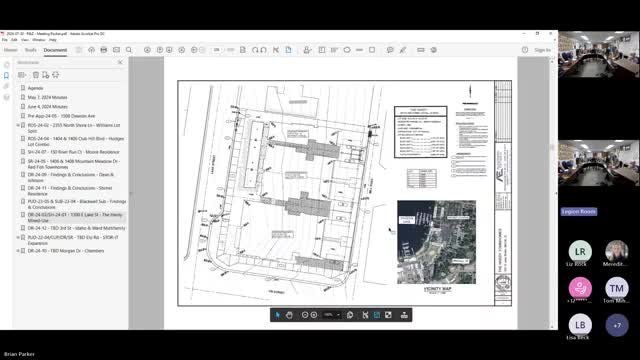Debate erupts over controversial new building design
July 31, 2024 | McCall, Valley County, Idaho

This article was created by AI summarizing key points discussed. AI makes mistakes, so for full details and context, please refer to the video of the full meeting. Please report any errors so we can fix them. Report an error »

During a recent government meeting, officials discussed a proposed development project that has sparked a debate over its design and compatibility with the surrounding neighborhood. Concerns were raised about the building's color scheme and architectural style, which some described as a \"big black monolith\" that contrasts sharply with the earth tones prevalent in the area.
One official expressed that while the design technically fits within zoning requirements, it does not align with the form, line, color, and texture of the existing structures. The building's modern aesthetic, characterized by extensive use of glass, was seen as dominating the vistas of the nearby water, raising questions about its visual impact on the landscape.
Conversely, other officials defended the design, arguing that it represents a contemporary interpretation suitable for the central business district. They noted that the building's features, including pavers and planters, would enhance the corner's appearance and contribute positively to the area. The discussion highlighted a broader trend of evolving architectural styles, with some officials acknowledging the necessity of accommodating new developments while adhering to certain design parameters.
The meeting also touched on the historical context of the site, referencing a previously approved but unbuilt project that was larger than the current proposal. This context was used to illustrate that the new development, while larger than existing structures, is still smaller than what could have been constructed in the past.
As the conversation progressed, officials clarified that the development must meet specific requirements for shoreline review and commercial zone design, emphasizing the importance of balancing modern design with community aesthetics. The outcome of this discussion will likely influence future development projects in the area, as officials navigate the complexities of urban growth and neighborhood character.
One official expressed that while the design technically fits within zoning requirements, it does not align with the form, line, color, and texture of the existing structures. The building's modern aesthetic, characterized by extensive use of glass, was seen as dominating the vistas of the nearby water, raising questions about its visual impact on the landscape.
Conversely, other officials defended the design, arguing that it represents a contemporary interpretation suitable for the central business district. They noted that the building's features, including pavers and planters, would enhance the corner's appearance and contribute positively to the area. The discussion highlighted a broader trend of evolving architectural styles, with some officials acknowledging the necessity of accommodating new developments while adhering to certain design parameters.
The meeting also touched on the historical context of the site, referencing a previously approved but unbuilt project that was larger than the current proposal. This context was used to illustrate that the new development, while larger than existing structures, is still smaller than what could have been constructed in the past.
As the conversation progressed, officials clarified that the development must meet specific requirements for shoreline review and commercial zone design, emphasizing the importance of balancing modern design with community aesthetics. The outcome of this discussion will likely influence future development projects in the area, as officials navigate the complexities of urban growth and neighborhood character.
View full meeting
This article is based on a recent meeting—watch the full video and explore the complete transcript for deeper insights into the discussion.
View full meeting